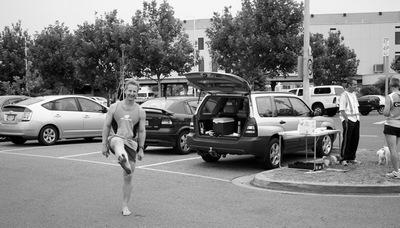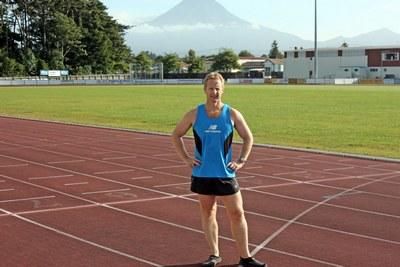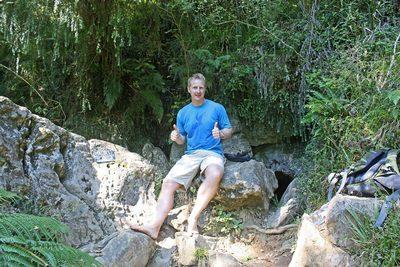
Member Profile of the WeekNeil“Neil_D” DonaldsonLots of Pain = The Ultimate Gain
In keeping with our international profiles lately, Neil_D, age 47, contributes to the BRS from Adelaide, South Australia, though he hails originally from Hyde, Cheshire, England. He works as an Electronics Design Engineer, having obtained a BSc of Electronics Engineering from Manchester Polytechnic and claims for his hobbies playing guitar (he was a punk rocker in the 70s) and some singing, though with the caveat is that beer is involved. These days he’s mainly vegetarian in order to “step lightly on the earth,” a mindset that naturally compliments running lightly on the earth.
Neil has been running for 37 years, and his history is littered with successes and setbacks due to multiple injuries. As a young boy running was a means to escape the prison-like confines of his school by getting out into nature for a bit during sports days. Not one to enjoy the team sports such as soccerand cricket, which were the dominant sports and so much a part of school-life, he would obtain permission to opt out and run instead. A small group of runners usually set off together, but after a mile or so, the group would stop along a local canal towpath to have a smoke. All except Neil that is: he was instructed to keep going until the next town 2 miles away, then pick them up on the way back in order to make a show of finishing up together. It wasn’t a problem, as he discovered he enjoyed the solitary runs. Apparently, the teacher assumed all had gone for a smoke and gave up, only to learn years later from Neil at a chance meeting that he had kept running and exercising long after his school days. The former teacher was quite moved to know that he had had an influence and that his job as sports teacher had been worthwhile. Something else from Neil’s early running years stand out in Neil’s memory: “At school I didn’t have ‘proper’ running shoes, I ran in plimsoles, thin rubber soles, and I don’t recall having shin pains or knee pains.”
“After leaving school I continued the running and bought real running shoes and doing longer distances. Everything was fine at first, but as I got better, I started to get more pains, mainly shins but long bouts of tendonitis. It was just after a tendonitis episode that I developed a knee problem. I remember distinctly going to see my local doctor. His advice was that running was bad for me, and I should give it up (maybe obesity would be a better alternative). He did recommend a physio to help fix the knee, and at the time, it seemed to cost me lots of money as it wasn’t covered by the National Health. I got back to running in all kinds of races from 10km up to the marathon but was continually plagued by injuries and so I never achieved the times I would have hoped for.”
20 years ago, in 1991, Neil migrated to Adelaide, Australia, where he discovered the weather to be more conducive to running and a lifestyle of being outdoors, and he hasn’t seen snow since! He continued to run, however, his physical challenges were just beginning and he gives a terrific history of how he evolved to being the runner he is today:
"I continued to run in races, mainly distances up to around 14km, still with shin soreness. Then in 1999, I did a race in the Adelaide Hills, the Sterling 10K; I was running fast down hill when I pulled a hamstring (probably classic overstriding). I managed to continue to run as I was still warm, but it slowed me right down. I finished the race well back in the pack. When I cooled down, I could hardly walk. That was the last race I ever did. The hamstring took 4 months to heal. Then I got my second knee problem, just one thing after the other. I went to see a physio and got it treated which took about 4 months. He recommended I see a colleague of his, a podiatrist to see if he could stop the knee problems reoccurring. Of course, you are not going to come away from seeing a podiatrist without him selling you some expensive orthotics and that is what I got (as well as being told that running was bad for me).
I hated the orthotics. It felt like I was walking on a big lump, and he also recommended some very stable running shoes, Brooks Beast as I remember. Those two in combination made my running a misery; each foot must have had to lift something like 500-600 grams. I soon developed tendonitis; so, back I went to the podiatrist. He took a look, then said, ‘we need to shorten the tendon to take the strain off it,’ and he did this by stacking a wedge under the orthotic to lift the heel higher again. It worked for a short while then came back with a vengeance, I then pulled a calf muscle. I felt like giving up.
I rested for months then started again, I got rid of the heavy shoes and bought some lighter ones.I eventually stopped using the orthotics too, as each time I ran with them it felt like my hips had come out of joint.I’d hobble around like an 80-year old. What happened to my running? The thing I used to love! It was then, back in 2009, that I came across the Born to Run book; I was so hooked on reading it I couldn’t put it down, and I read the book in 3 days.
In September 2009, I went out for my last ever run in running shoes. It was a beautiful spring afternoon.I pulled the runners on and set off on what I anticipated was going to be a relaxing run. Within 1km my shins were so stiff I couldn’t put my feet on the floor properly. I was so frustrated, I took the shoes off and walked home. During the walk home a strange thing happened, my shins stopped hurting.
I threw the shoes onto a shelf and have not touched them since. I sent off for some of the strange Vibram shoes and went through all the mistakes of learning how to run with my feet and not big blocks. But the best move was getting the book on Pose Running that explained it all in a fashion I could understand. I would make that book compulsory reading in school; I believe it is that good.”
His most unusual or memorable running experience was "while barefoot hiking in the hills above Nelson, New Zealand, in a deep forest when I came across a large male Red Deer. I think we surprised each other.I didn’t dare breathe and then it bolted off into the forest... magical.” His favorite distance these days is 10km, and favorite race is the Sterling 10km, which is held in autumn, when the trees in the hills are so beautiful.
His personal records: Mile - 5:28;10K -37:29 (Oldham 10K 1986);HalfMarathon - 1:24:56 (1986);Marathon 3:15:48 (1986)
Competitive times aside, he explains the core reason he runs: "It is the best way of relieving stress, and it gives me a sense of freedom, and it compresses distances. Some people would not consider walking a mile.I consider if I should run back from the city and think, 'Well, it’s only 7 miles...'.”He runs barefoot
and only runs minimalist when too hot.
His reason for joining the Barefoot Runner's Society was to find other people in the same pursuit of popularising the sport: "Adelaide is pretty conservative, and I might be only one of two who runs barefoot. People think I’m nuts... So here I am. I did my first race on Christmas day, a short 8.5km run. On January 4, I ran 14.5km, and sure I get slight calf soreness, but it is always temporary and usually an indicator that my form still needs work."
Neil sums it all up nicely: "Running is fun again. and I just want to tell every other runner out there who is going through the same injuries and frustrations that there is an answer out there. Sure the transition can take a while, but it is worth the effort."
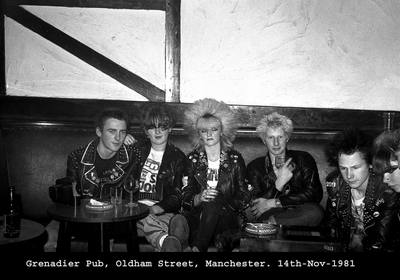
1981 Grenadier - Neil's Band
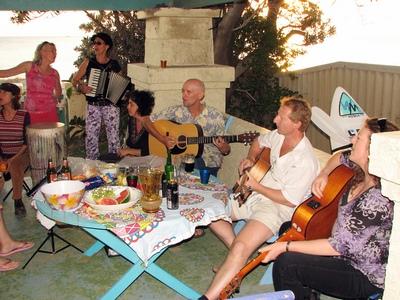
Martin Jam Session
